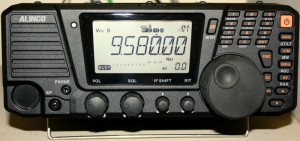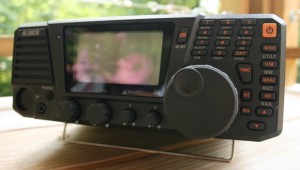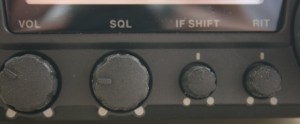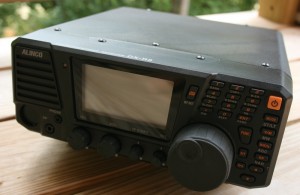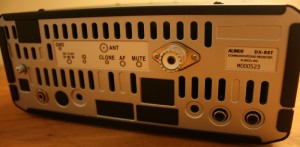Final 12 months, once I noticed the announcement {that a} new tabletop radio–the Alinco DX-R8T–was about to hit the market, I virtually fell out of my chair.
A brand new tabletop available on the market? Might or not it’s true? Over the previous few years, many long-time producers have dropped out of the shortwave tabletop market, whereas newer, smaller producers have been popping up within the SDR (Software program Outlined Radio) market. SDRs are nice–quite a lot of efficiency for the value–however to hearken to the radio, you must flip in your pc, launch a program, and usually, do issues to isolate any noise your pc might generate.
A tabletop, however, merely requires that you just flip it on: immediately, it’s there, awaiting tuning.
Clearly, I used to be desirous to check out the DX-R8T. Fortuitously, the nice of us at GRE America (the US distributor for Alinco) kindly loaned me one in all their receivers to overview for SWLing.com.
First Impressions
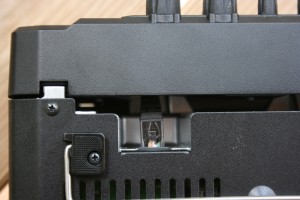
The face plate on the Alinco DX-R8T is removable (with optionally available extension cable). This view, from beneath, reveals the place it plugs into the receiver physique.
I actually recognize the scale and really feel of the Alinco DX-R8T. It’s heavy, with a steel case and a really sturdy plastic face plate. It has a bail underneath the entrance panel which permits it to be lifted and carried for straightforward tabletop operation.
Please be aware: When you’re new to tabletop shortwave receivers or ham radio transceivers, remember that the Alinco DX-R8T relies on the Alinco DX-SR8T ham radio transceiver–and as such, it operates on 12VDC. Which means, you will want a 12 volt energy provide just like the Pyramid PS-3 or comparable. If you have already got an influence provide, ensure that it could possibly at the least ship 1.5 amps at 13.8V. You do not need to buy a “wall wart” sort energy provide, as many of those are noisy and can impact your skill to listen to stations. For the aim of overview, I’ve really been operating the DX-R8T off of a 40AH, 12 V battery to eradicate all such noise.
The tuning knob, which I personally discover to be a very essential function, is substantial, stable, and strikes fluidly–a plus. I’ve not discovered a solution to regulate the strain/resistance on the tuning knob, however haven’t felt the necessity to take action, both. The radio is heavy sufficient that it stays put whereas tuning and urgent keys, which can also be essential.
The ergonomics are good. I like how the amount, squelch, IF shift and RIT are all simply accessible single-function knobs.
If I’ve any criticism of this radio’s ergonomics, it could merely be that a number of of the buttons are a bit near the tuning knob. I’ve bigger fingers, so whereas pushing the Perform change, RIT change, keylock or turning the RIT knob, I usually inadvertently transfer the tuning knob. However in reality, this can be a pretty persnickity commentary; usually I’m happy with the panel format and ergonomics.
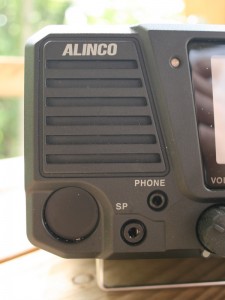 Just like the IC-R75, the DX-R8T has a front-facing speaker–all the time a great factor when listening by way of a built-in speaker. Admittedly, the general constancy of the built-in speaker is mediocre at greatest–it lacks any bass response and sounds shallow, and sadly, there’s no solution to change the tone from excessive to low. Whereas the built-in speaker is ok for listening to the ham radio bands (in SSB or a CW mode), I would really like higher constancy for the published bands. That is little doubt a vestige of this radio’s ham transceiver heritage.
Just like the IC-R75, the DX-R8T has a front-facing speaker–all the time a great factor when listening by way of a built-in speaker. Admittedly, the general constancy of the built-in speaker is mediocre at greatest–it lacks any bass response and sounds shallow, and sadly, there’s no solution to change the tone from excessive to low. Whereas the built-in speaker is ok for listening to the ham radio bands (in SSB or a CW mode), I would really like higher constancy for the published bands. That is little doubt a vestige of this radio’s ham transceiver heritage.
The entrance show is massive, with an adjustable dimmer. It’s crisp and very straightforward to learn, which I like very effectively.
The competitors
The one present shortwave tabletop rivals with the Alinco DX-R8T ($500), are the Icom IC-R75 ($600-700) and the Palstar R30A ($740 US). The Icom IC-R75 is a advantageous receiver and one I’ve advisable to many net readers searching for a multi-function tabletop. It has been available on the market for years in lots of variations (some extra profitable than others), and is usually a stable performer. The Palstar R30A can also be a superb receiver, although it lacks the bells and whistles of its Japanese counterparts. Individuals who purchase a Palstar need bare-bones simplicity and efficiency.
Since I personal a Palstar R30C (the predecessor to the R30A), I used it as some extent of comparability in my overview of the DX-R8T.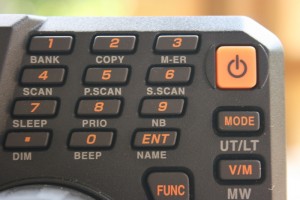
Operation
The DX-R8T is a pleasure to function. I used to be in a position to intuit almost all however the reminiscence features with out wanting on the proprietor’s handbook even as soon as. A serious plus, in my view!
Tuning is the operate you utilize essentially the most on any radio; with the DX-R8T you could have 3 ways to tune:
- the tuning knob
- the up/down arrows and M/kHz button to toggle steps
- the direct keypad entry
The keypad is configured like that on a cellphone, which I like. Once more, as a result of I’ve massive fingers, I do want the keypad buttons had been barely larger. Frequencies are entered in MHz, so to go to six,925 kHz, for instance, you enter “6” “.” “9” “2” “5” “ENT.” To maneuver to six,000 kHz, you may shortcut by getting into “6” “.” “ENT.” Easy sufficient.
I did discover it useful to make use of the up/down arrows to maneuver between meter bands, in any other case I by no means tune with the up/down arrows.
The tuning knob will get my seal of approval and scanning with it’s a pleasure. Admittedly, I want it had been a bit extra adaptive to tuning pace (i.e., turning shortly quickens the frequency steps) or that it may very well be adjusted considerably. You’ll be able to inform that the Alinco DX-R8T derives from novice radio, as its tuning knob pace is ideal for locating ham radio stations.
Switching between modes is straightforward–urgent the “Mode” button strikes you between, AM, FM, CWL, CWU, LSB and USB.
Broadcast listening
The Alinco DX-R8T is a succesful broadcast receiver. In my exams, it was as delicate as my Palstar.
The beneficiant, broad 9kHz AM bandwidth signifies that broadcast stations are available with a substantial amount of constancy. The flip aspect of the 9kHz bandwidth, although, is that it’s much less efficient if there’s an adjoining station–say, 5kHz away. Fortunately, the DX-R8T has an IF shift knob useful so {that a} modest adjustment can often eradicate adjoining interference.
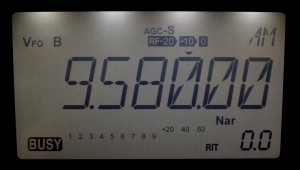 I discovered the slim AM bandwidth a bit too slim for broadcast listening. It’s a mere 2 kHz broad and is just too restrictive if listening to music. For voice intelligibility, the slim filter works pretty effectively, utilizing the IF shift to open it a bit. This slim filter may very well be helpful if making an attempt to snag a weak DX sign, because it’s sufficiently slim to chop out quite a lot of noise.
I discovered the slim AM bandwidth a bit too slim for broadcast listening. It’s a mere 2 kHz broad and is just too restrictive if listening to music. For voice intelligibility, the slim filter works pretty effectively, utilizing the IF shift to open it a bit. This slim filter may very well be helpful if making an attempt to snag a weak DX sign, because it’s sufficiently slim to chop out quite a lot of noise.
Talking of noise, the Alinco has a respectfully low noise ground.
Novice radio bands
The DX-R8T has modes for higher sideband, decrease sideband and even higher and decrease CW (morse code/digital) sidebands.
It performs reasonably effectively on the ham bands, pulling out weak SSB stations from the static.
In reality, its 500 Hz CW audio filter is kind of good in the event you like listening to CW underneath regular situations. I did check out the DX-R8T on Discipline Day 2011 and located that it had a tough time coping with the intensely crowded band situations. Adjoining alerts trigger “thumping” whereas listening in pile-ups. This was no shock; even dear ham radio transceivers are topic to one of these downside underneath crowded CW situations. [I usually turn to my Elecraft K2 or Ten-Tec OMNI VI+ (ham band-only transceivers) when participating in a Field Day or contest event.]
Th DX-R8T ought to do a formidable job listening to SSB ham radio, utility and pirate radio stations and the digital modes (like PSK31, RTTY, and many others.).
Abstract
Professionals:
- Wonderful sensitivity within the shortwave (HF) bands
- Easy design requires little or no reference to proprietor’s handbook
- Further broad 9kHz filter lends to high-fidelity broadcast listening (see con)
- Filters are efficient and effectively chosen for SSB and CW modes
- Giant dimmable back-lit show with all pertinent info
- Versatile: use the DX-R8T as a tabletop, detach the distant head to avoid wasting footprint in your shack, mount in your automotive or hook up with your PC and use the DX-R8T as an SDR
- Entrance-facing speaker (see con)
- DRM prepared
- Full management of all receiver features when used as an SDR
- Wonderful worth
Cons:
- AM slim filter is a bit too slim for many broadcasts
- Some front-panel buttons are a bit too near the tuning knob
- Mediocre built-in speaker, however good constancy via exterior speaker or headphones
- Exterior speaker hook-up solely on entrance panel
- Doesn’t include a 12 volt energy provide (offered individually)
Within the spirit of full disclosure, I’ve to confess that I used to be very skeptical of the Alinco DX-R8T earlier than reviewing it. The value level was virtually too engaging for a tabletop radio, and to supply the flexibility of a removable faceplate and management as an SDR receiver appeared too good to be true. I believed there should be a compromise someplace. Fortuitously, it appears I used to be flawed.
The Alinco DX-R8T is, actually, a advantageous receiver. I particularly love the truth that it’s easy to function. Whereas there are comparatively few new tabletops launched to the market, there are a variety of Software program Outlined Radios out there–their efficiency is superb, however the studying curve (particularly for a newcomer to the interest) may be intimidating. Plus they require a pc.
With the Alinco DX-R8T, you get one of the best of each worlds, a easy “activate and tune in” tabletop, plus a totally DRM prepared SDR.
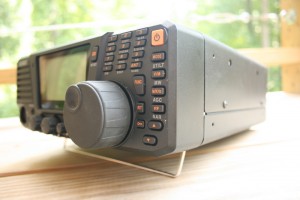 When folks write in and ask for recommendation on shopping for their first tabletop receiver, I can advocate this DX-R8T with out hesitation. Although it lacks the DSP that may be bought individually with an Icom R75, it’s as delicate as my Palstar R30C and the 9kHz AM bandwidth lends some glorious constancy into headphones or an exterior speaker.
When folks write in and ask for recommendation on shopping for their first tabletop receiver, I can advocate this DX-R8T with out hesitation. Although it lacks the DSP that may be bought individually with an Icom R75, it’s as delicate as my Palstar R30C and the 9kHz AM bandwidth lends some glorious constancy into headphones or an exterior speaker.
I need to admit, I’m impressed with the Alinco DX-R8T. It has all the main options I like in a tabletop radio: it’s well-built, straightforward to make use of, delicate, versatile, and it has ample management choices to assist regulate adjoining interference and enhance intelligibility. It additionally has a really engaging worth at $499 US. It’s next-best competitor might be the Icom R75–however neither the Icom, nor the Palstar R30A, can be utilized as an SDR and neither have the suitable IF output for DRM as does the Alinco DX-R8T. In brief, it’s quite a lot of radio for the cash, glorious for these beginning within the interest.
Paired with a great antenna, the Alinco DX-R8T is a discount performer. When you’ve considered transferring from transportable radios to the world of a extra severe receiver, you may’t go flawed with the Alinco DX-R8T.
––
Need to hear what audio from the Alinco DX-R8T seems like? Here’s a 2+ hour sampling of Radio New Zealand Worldwide recorded 02 Sep 2011:



